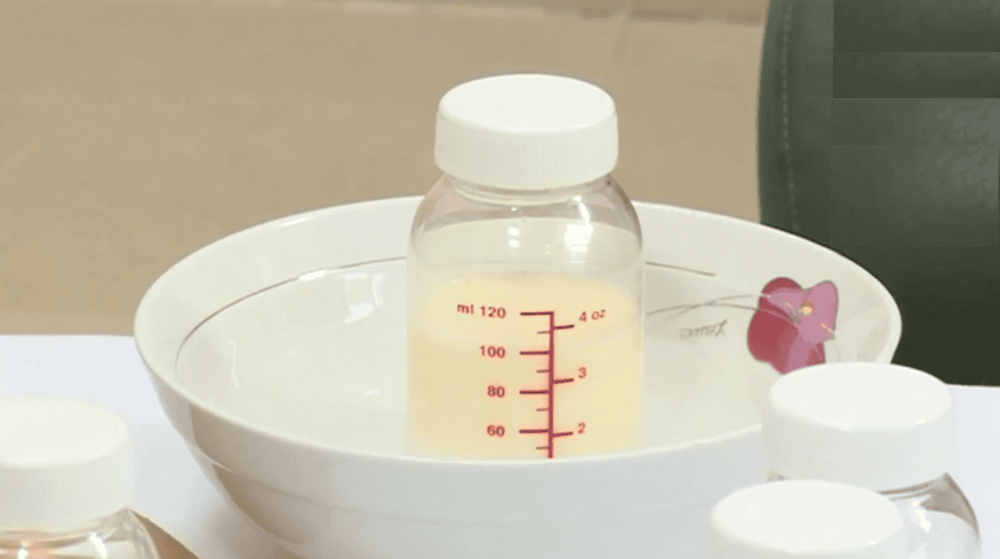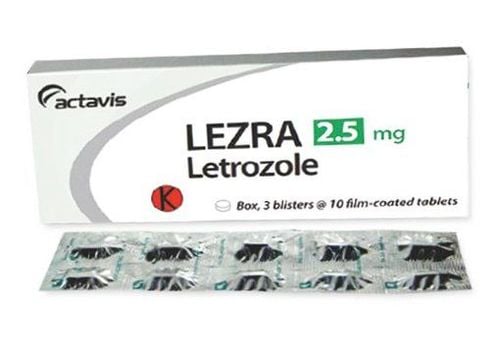This article is professionally reviewed by MSc, MD Trinh Thi Thanh Huyen – Obstetrician and Gynecologist, Department of Obstetrics and Gynecology, Vinmec Hai Phong International General Hospital.
Occasionally, a breastfeeding woman may notice blood in her breast milk. This situation can be observed after expressing milk or when the baby spits out a small amount of breast milk during nursing. This is a common concern for many breastfeeding mothers, especially those nursing their first child.
1. What Factors Affect the Color of Breast Milk?
Human breast milk comes in a variety of colors. If you use a breast pump, you may notice significant changes in its color. Unlike formula milk, which always looks the same, the composition and appearance of breast milk can change frequently, sometimes throughout the day or even within a single pumping or feeding session.
Breast milk may appear white, yellow, clear, or occasionally green. The components of many foods or drinks consumed by the mother during the day can be excreted into breast milk in various ways. Below are common observations:
- A diet rich in yellow or orange vegetables (e.g., carrots, sweet potatoes) can increase the carotene content in breast milk, giving it a yellow or orange tint. Mothers c
- n rest assured that carotene is completely harmless to infants.
- Food coloring used in sodas, fruit juices, or gelatin desserts can cause breast milk to appear pink or pinkish-orange.
- Green-colored breast milk may be associated with consuming large amounts of green vegetables such as seaweed or kale.
- Frozen breast milk often appears slightly yellow after storage.
- Pink breast milk may indicate the presence of blood. This commonly originates from cracked nipples or blood mixed into the milk, which can be observed early on.
- Brown breast milk may be caused by the "rusty pipe syndrome." During pregnancy and the early postpartum days, the milk ducts and secretory cells in the breasts grow and stretch, causing blood to flow into the breasts and occasionally leak into the milk ducts. This can result in milk appearing brown or rust-colored.

2. How to Recognize Signs of Blood in Breast Milk?
Based on the factors that influence the color of breast milk mentioned above, a small amount of blood in breast milk during the early days of breastfeeding is quite common due to physiological changes inside the body. A small amount of blood often goes unnoticed unless the mother is pumping milk or the baby spits up.
If a significant amount of blood is ingested through breast milk, the baby may have black streaks of blood in their stool, or the stool may appear tar-like and have a strong, unpleasant odor.
If bleeding continues for the first few days and mixes with the milk, the mother should seek medical consultation for evaluation and intervention by an obstetrician-gynecologist.
3. What Are the Causes of Blood in Breast Milk?
The common causes of blood in breast milk include:
3.1. Rusty Pipe Syndrome
"Rusty pipe syndrome" occurs when the milk ducts and milk-producing cells grow rapidly and enlarge after birth. In this case, a small amount of blood may be seen in breast milk during the first week or even in the following weeks.
This phenomenon is not harmful to the mother or baby. Occasionally, when the baby swallows blood, it may trigger a gag reflex or vomiting due to irritation, but it is not harmful. "Rusty pipe syndrome" typically resolves within 7 to 10 days postpartum. During this time, breastfeeding should not be interrupted.
3.2. Cracked Nipples
If the nipples are cracked or damaged during breastfeeding, blood in the milk will be clearly noticeable.
The source of the blood is entirely different from the milk. Sometimes, using a breast pump can help reduce nipple damage and allow the nipples to heal, particularly in the early days when the mother may not yet know the correct breastfeeding position.
3.3. Damage to Breast Capillaries
Damage to the breast tissue caused by hand expression or using a breast pump with excessive suction can lead to bleeding from capillaries within the breast tissue.
The milk-producing glands in the breast develop rapidly during pregnancy, requiring the blood vessel network to grow quickly as well. This rapid growth creates fragile structures that are easily ruptured by excessive force.
3.4. Mastitis
Breast infections (mastitis) can cause bleeding from the nipples.

3.5. Breast Tissue Papilloma
Papilloma is a benign growth on the lining of the milk ducts. If bleeding occurs, it may cause the milk to appear pink.
This condition is usually non-cancerous and painless, but it can cause blood to leak into the milk ducts during breastfeeding or pumping. Breastfeeding should generally continue unless it causes irritation to the baby. Conversely, if the baby experiences digestive disturbances due to ingesting blood, the mother may need to pause breastfeeding until the bleeding stops, which typically takes 3–7 days.
3.6. Breast Tissue Fibrosis
Breast fibrosis refers to a condition characterized by symptoms in the breast tissue, including breast pain, solid lumps, and cysts.
This condition is not a contraindication for exclusive breastfeeding during the first six months unless the baby can no longer tolerate daily breast milk intake.
3.7. Breast Cancer
In most cases, blood in breast milk is not a cause for concern. However, certain malignant conditions, such as breast cancer, require early intervention to improve long-term outcomes.
4. Does the blood in breast milk cause any harm to the baby?
Blood in breast milk is still considered safe for exclusive breastfeeding during the first six months. Therefore, breastfeeding should not be delayed or interrupted if the baby shows no signs of intolerance.
However, if the mother has any known bloodborne diseases, such as hepatitis, HIV, or syphilis, breastfeeding should only continue after consulting a doctor.
Additionally, blood in breast milk may affect your baby in the following ways:
- Changes in taste: Your baby may dislike the taste of breast milk containing blood, leading to reduced feeding or fussiness at the breast.
- Blood in the baby’s stool: You may notice blood in your baby’s stool.
- Digestive discomfort or vomiting: Some babies may swallow the milk but have difficulty tolerating it, resulting in bloating or vomiting.
5. What Should Be Done if There’s Blood in Breast Milk?
- Treat cracked nipples: If the blood is clearly from damaged nipples, temporarily stop breastfeeding and treat the nipples until they heal.
- Get breastfeeding guidance: Improper latch or positioning is a common cause of nipple bleeding. Seek advice on how to breastfeed properly.
- Monitor for signs of mastitis: If you experience flu-like symptoms, fever, redness around the breast, or pain, you may have mastitis and should see a doctor immediately.
- Continue breastfeeding or pumping: Since blood in breast milk is considered safe for the baby, continue breastfeeding. If unsure about proper latching, mothers can use a breast pump. Abruptly stopping breastfeeding can lead to more severe issues, such as clogged milk ducts, mastitis, or reduced milk production.
Blood in breast milk will no longer be a frightening issue if you are well-informed. By understanding the key information, mothers can ensure both their health and the nourishment and development of their baby during the early years.
To arrange an appointment, please call HOTLINE or make your reservation directly HERE. You may also download the MyVinmec app to schedule appointments faster and manage your reservations more conveniently.
Articles refer to sources: hellomotherhood.com, healthline.com, verywellfamily.com
To arrange an appointment, please call HOTLINE or make your reservation directly HERE. You may also download the MyVinmec app to schedule appointments faster and manage your reservations more conveniently.








